How we can correct imbalances in our eating habits and thus prevent illness and restore well-being, also on a mental level.
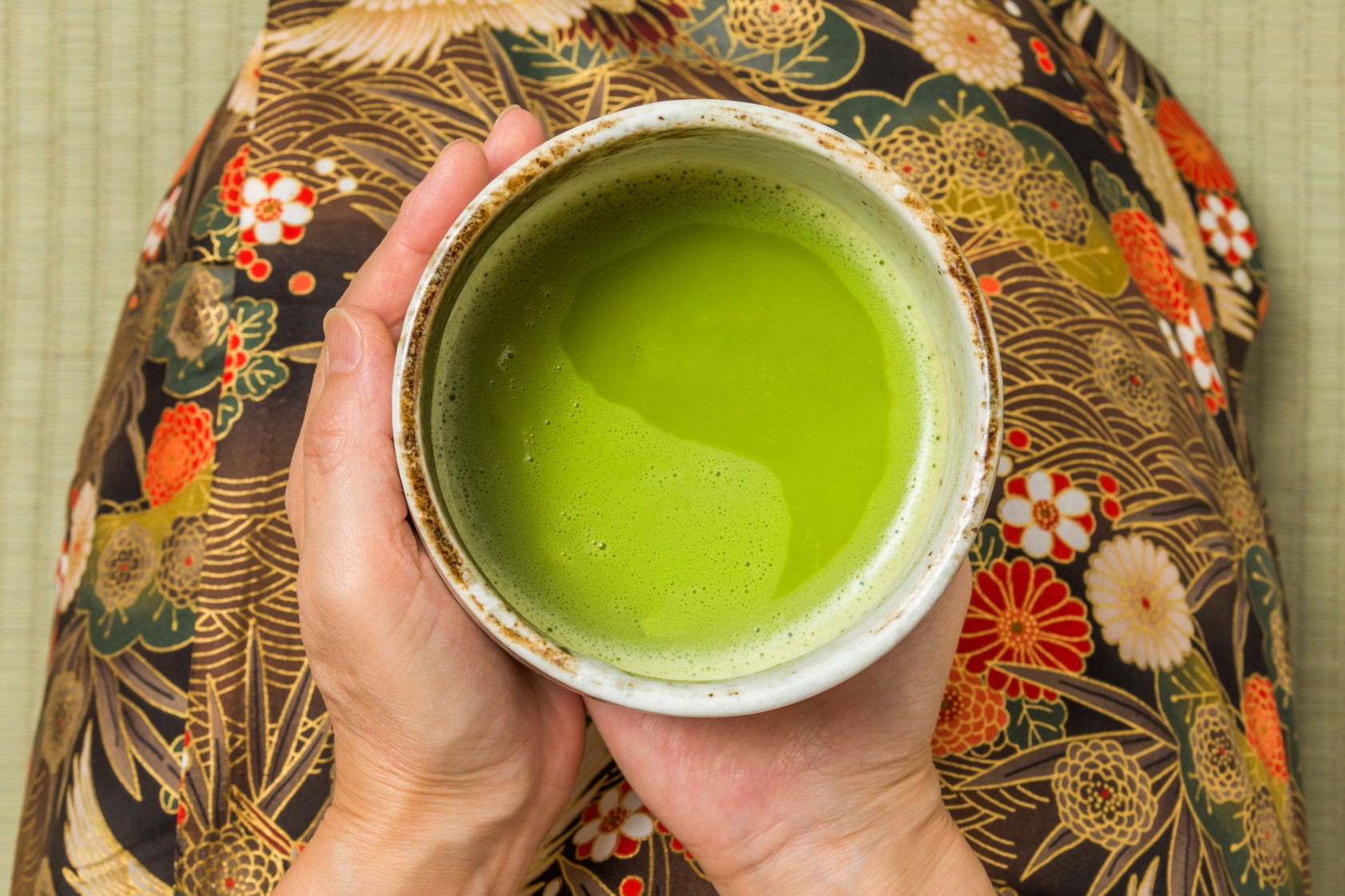
A healthy and vital future lies in the right balance of food. The nutritional science of the Far East, which is based on the Yin/Yang principle and what is commonly known as macrobiotics, says that all diseases of the modern world are caused by the fact that 90% of the food of the so-called civilized countries has a predominant Yin character.
Even if we don’t eat an excessive amount of ready-made products or tinned food, we have lifted many things that were inaccessible to our ancestors – and if then at most as a luxury food – to the rank of main meals and consume an excessive amount of them.
So we consume sugar in drinks, sweets, pastries and desserts – all according to the motto „There is always room for ice cream“ or the temptation of cola being „a refreshing drink“. Already the manufacturer refines spinach with a dash of cream and we eat exotic fruits like bananas, mango, pineapple and avocado all year round. We demand that cheese should be melty, cereals should have a crunch and drinks should be fizzy.
This form of nutrition, which is often based exclusively on pleasure, has little to do with what we are supposed to eat and even less with balance. This not only leads to imbalance on a physical level, but also brings an overemphasis of Yin energies to the mind and spirit.
We see results of this in being influenced by advertising and the media, indecisiveness, changeability and moodiness, lack of concentration, lack of integrity, resistance and perseverance as well as lack of clarity in the inner world and in expressions with others.
The following list gives a vegetarian overview of what we should consume to restore balance. The list is vegetarian because the consumption of meat and fish in itself is much more yin than eating plant-based food.
The recommendation for a short term treatment or, if necessary a long lasting diet change is to only eat Yang food to restore the balance and afterwards to make sure that the diet (even if you eat an ice cream every now and then) will never be completely out of balance again.
Depending on their basic energy, foods can be moderate YANG, strongly YANG or very strong (extreme) YANG. The same applies to Yin foods. The following is an overview of vegetarian Yang foods without claim to completeness.
Cereals and cereal products
According to macrobiotics, this category of food belongs to the most Yang, because what we eat as grain is the seeds of the new plant. Seeds and kernels carry the whole plant in an extremely concentrated form and the plant unfolds through the Yang power of the seed, the kernel (the center) to full (expanded – Yin) size.
Whole grain cereals in unprocessed form are therefore very Yang.
Moderate YANG: wholegrain wheat, wholegrain rice, wholegrain barley, wholegrain oats, wholegrain corn, wholegrain rye, Bulgarian wheat, wholegrain wheat semolina, wholegrain corn flour, puffed rice, black bread
Strong YANG: buckwheat, millet, basmati rice, natural rice, amaranth, sorghum millet
Very strong YANG: cereal germs, wild rice
Fruits
Most fruits are Yin, as they contain the sustaining nutrients so that the seed is well supplied with everything (maternal) it needs during its first time in the soil.
Fruits that are Yang taste sour, bitter and astringent. This also applies to apples and blueberries; the sweet ones among them are not very Yang anymore.
Moderate YANG: wild strawberries, quinces, rose hips, blackberries, raisins, blueberries, gooseberries, blackcurrants, pomegranate
Strong YANG: black blueberries, sour thorn, barberries, apples, raspberries, red currants, cranberries, red blackberries, sloes – the fresh fruit
Very strong YANG: Dried sloes, wild apples (wooden apples), dwarf apples
Fruits with fat content
Moderate YANG: black olives, chestnuts
Strong YANG: hazelnuts, walnuts, cashew nuts
Very strong YANG: pistachios, almonds
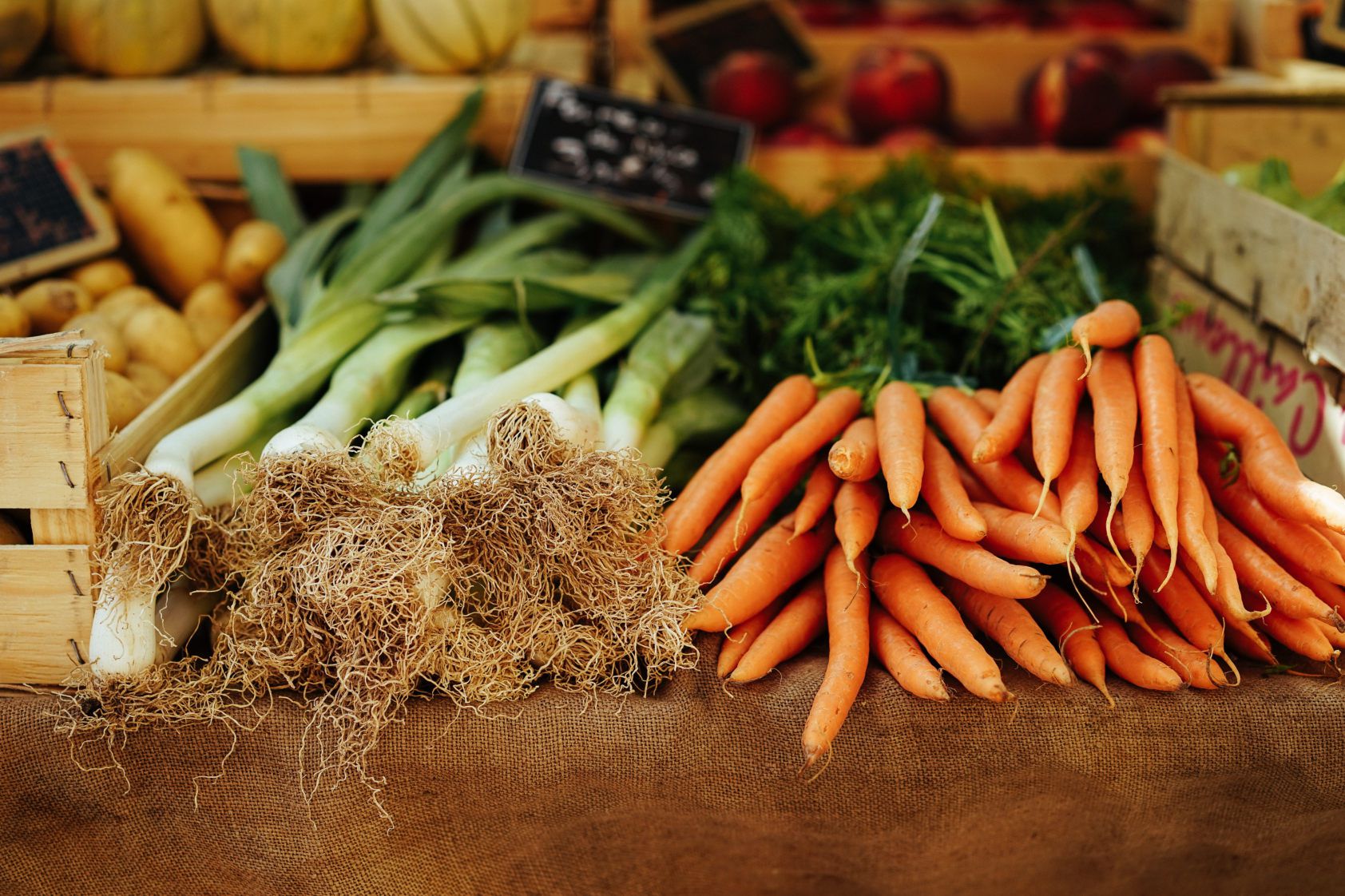
Vegetables
Medium YANG: celery (root), white onion, spring onion, garden squash, green beans, dandelion, white radish, garden radish, spinach, green garlic, white cabbage, artichoke, kohlrabi, red turnip, rutabaga, black salsify, sun root, Brussels sprouts
Strong YANG: chicory/endive, red onion, cauliflower (above ground part), carrot (root), parsley (root), leek (whole), nettle (leaves), broccoli (above ground part), Chinese cabbage (above ground part), savoy cabbage (above ground part)
Very strong YANG: Red cabbage
Legumes
Moderate YANG: Mung beans
Strong YANG: Chickpeas, soy, adzuki beans
Very strong YANG: none
Milk products
Moderate YANG: goat milk
Strong YANG: goat cheese, ghee (clarified butter)
Very strong YANG: none
Miscellaneous
Moderate YANG: free-range eggs (egg yolk), soya cheese, quail eggs (whole), roe of any kind (attention: most fish eggs still require a killing of the fish)
Strong YANG: fertilized eggs (egg yolk), porcini (whole), sesame paste
Very strong YANG: bee pollen, salt
Oils
Moderate YANG: olive oil, corn oil, almond oil
Strong YANG: Soybean oil (attention: high in omega 6), mustard oil, canola oil, castor oil
Very strong YANG: sunflower oil (attention: high in Omega 6), sesame oil
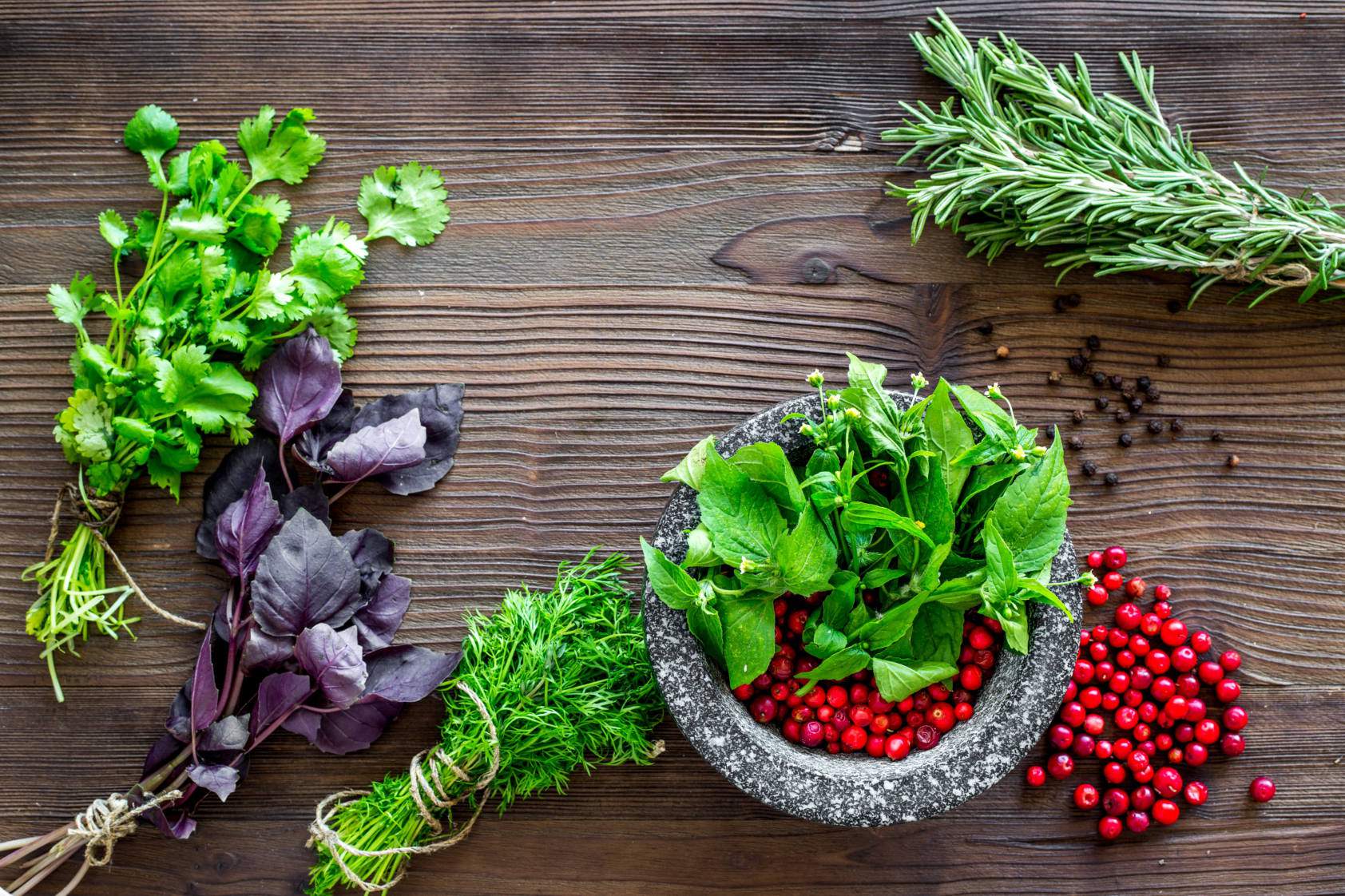
Spices
Moderately YANG: Celery (Fol.), Anise (Sem.), Horseradish (Fol.), Dill (Herb.), Peppermint (Fol.), Garden Mint (Fol.), White Mustard (Sem.), Parsley (Herb. ). Tarragon (Fol.), Turmeric (Rad.), Onion (Bulb.), Wild Garlic (Herb.), Lovage (Herb.), Scottish Lovage (Herb.), Nutmeg (Fruct.), Green Pepper (Sem.), grapeseed (Fol.), Egyptian garlic (Herb.)
Strong YANG: hot peppers (chilli, hot peppers – fruct.), Basil (herb), thyme (herb), caraway (sem.), Coriander (sem.), Laurel (fol.), Ginger (rad.), Horseradish (Rad.), Dill (Sem.), Black Mustard (Sem.), Black Pepper (Sem.), Cinnamon (Cort.), Garlic (Bulb.), Saffron (Flor.), Angelika (Rad.), Cayenne Peppers (Fruct.), Chervil (Fol.), Cardamom (Fol.), Garden Cress (Herb.), Allspice (Fruct.), Spearmint (Fol.), Monarda, Watercress (Herb.), Real Black Cumin ( Sem.), Sage (Herb.), Fenugreek (Sem.)
Very strong YANG: savory (herb), ginger (rad.) dried, rosemary (fol.), Oregano (fol.), Cloves (gem.) dried

Polar Asana-s in Hatha Yoga
Practice the asana longer to strengthen the Yin or Yang to each side as needed.
- Katicakrasana
- Garudasana
- Trikonasana
- Natarajasana
- Sukhasana
- Ardha Matsendrasana
- Virasana
- Ardha Uttita Dhanurasana
- Ardha Shalabhasana
- Eka Pada Salamba Sarvangasana
- Janusshirshasana
- Gumukhasana
- Padmasana
Practice Tratakam with the Yin-Yang Yantra to balance the Yin Yang forces within you
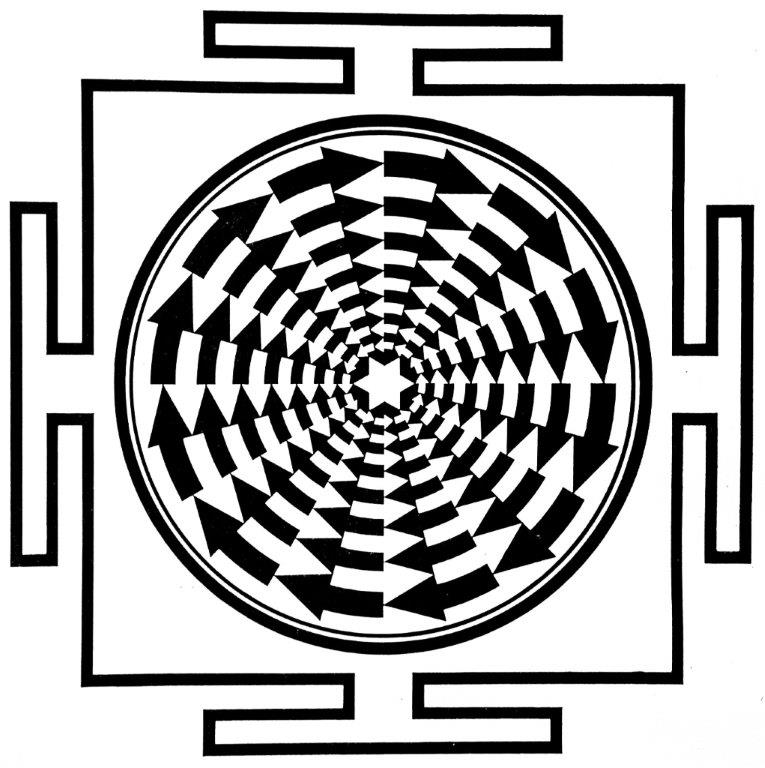
Yin-Yang Yantra
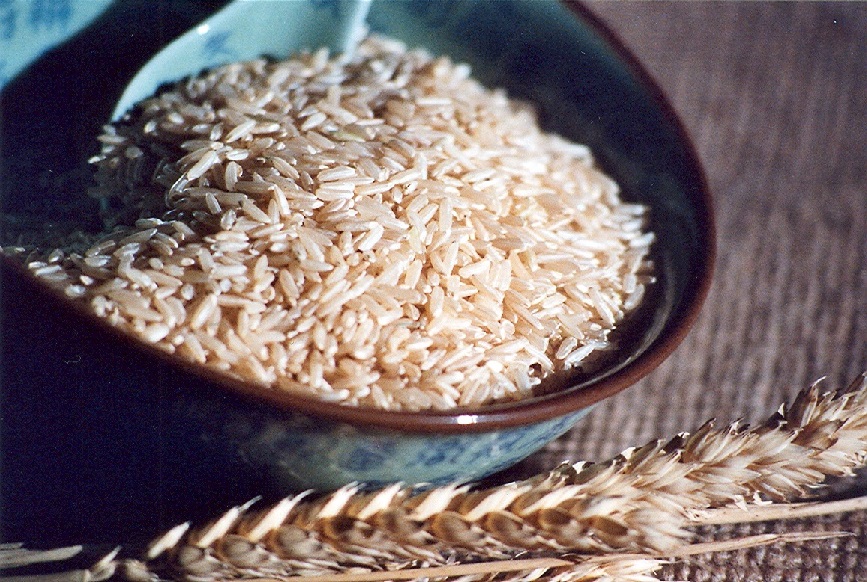
The Yang Diet Ohsawa Stage 7
The Ohsawa Yang Diet is based on the macrobiotic philosophy (originally by C. W. Hufeland), further developed by George Ohsawa and his students. Recovery and maintenance of health is achieved here mainly through diet. In his Asian doctrine of macrobiotics he divided the diets into 10 gradations (from – 3 to 7). Stage 7 is considered to be the fastest and easiest way to restore the balance in the body and thus to cure diseases (especially diseases of modern civilization).
Ohsawa recommends a 10-day diet, as his research has shown that the blood is completely transformed and regenerated in 10 days.
If you wish to continue the diet after the first 10 days, it is recommended that you take a 3-day break during which you will be vegan and eat freshly squeezed juices.This is recommended by other, non-macrobiotic, nutritional science research.
With the Ohsawa diet stage 7 you only eat the following foods:
- Wheat
- Rice
- Buckwheat
- Millet
These ingredients are always the whole grain. In addition, only water (in small quantities) and salt (sea or rock salt) are used.
All dishes made from these ingredients are allowed.
Attention: There are e.g. rice waffles that are made only from rice and salt. However, due to the process of popping up, a large part of the yang energy has disappeared – so if possible do not consume it.
One should take care to include all ingredients as evenly as possible in the Ohsawa diet, because this way one receives all necessary nutrients in sufficient quantity.
How we can correct imbalances in our eating habits and thus prevent illness and restore well-being, also on a mental level.

A healthy and vital future lies in the right balance of food. The nutritional science of the Far East, which is based on the Yin/Yang principle and what is commonly known as macrobiotics, says that all diseases of the modern world are caused by the fact that 90% of the food of the so-called civilized countries has a predominant Yin character.
Even if we don’t eat an excessive amount of ready-made products or tinned food, we have lifted many things that were inaccessible to our ancestors – and if then at most as a luxury food – to the rank of main meals and consume an excessive amount of them.
So we consume sugar in drinks, sweets, pastries and desserts – all according to the motto „There is always room for ice cream“ or the temptation of cola being „a refreshing drink“. Already the manufacturer refines spinach with a dash of cream and we eat exotic fruits like bananas, mango, pineapple and avocado all year round. We demand that cheese should be melty, cereals should have a crunch and drinks should be fizzy.
This form of nutrition, which is often based exclusively on pleasure, has little to do with what we are supposed to eat and even less with balance. This not only leads to imbalance on a physical level, but also brings an overemphasis of Yin energies to the mind and spirit.
We see results of this in being influenced by advertising and the media, indecisiveness, changeability and moodiness, lack of concentration, lack of integrity, resistance and perseverance as well as lack of clarity in the inner world and in expressions with others.
The following list gives a vegetarian overview of what we should consume to restore balance. The list is vegetarian because the consumption of meat and fish in itself is much more yin than eating plant-based food.
The recommendation for a short term treatment or, if necessary a long lasting diet change is to only eat Yang food to restore the balance and afterwards to make sure that the diet (even if you eat an ice cream every now and then) will never be completely out of balance again.
Depending on their basic energy, foods can be moderate YANG, strongly YANG or very strong (extreme) YANG. The same applies to Yin foods. The following is an overview of vegetarian Yang foods without claim to completeness.
Cereals and cereal products
According to macrobiotics, this category of food belongs to the most Yang, because what we eat as grain is the seeds of the new plant. Seeds and kernels carry the whole plant in an extremely concentrated form and the plant unfolds through the Yang power of the seed, the kernel (the center) to full (expanded – Yin) size.
Whole grain cereals in unprocessed form are therefore very Yang.
Moderate YANG: wholegrain wheat, wholegrain rice, wholegrain barley, wholegrain oats, wholegrain corn, wholegrain rye, Bulgarian wheat, wholegrain wheat semolina, wholegrain corn flour, puffed rice, black bread
Strong YANG: buckwheat, millet, basmati rice, natural rice, amaranth, sorghum millet
Very strong YANG: cereal germs, wild rice
Fruits
Most fruits are Yin, as they contain the sustaining nutrients so that the seed is well supplied with everything (maternal) it needs during its first time in the soil.
Fruits that are Yang taste sour, bitter and astringent. This also applies to apples and blueberries; the sweet ones among them are not very Yang anymore.
Moderate YANG: wild strawberries, quinces, rose hips, blackberries, raisins, blueberries, gooseberries, blackcurrants, pomegranate
Strong YANG: black blueberries, sour thorn, barberries, apples, raspberries, red currants, cranberries, red blackberries, sloes – the fresh fruit
Very strong YANG: Dried sloes, wild apples (wooden apples), dwarf apples
Fruits with fat content
Moderate YANG: black olives, chestnuts
Strong YANG: hazelnuts, walnuts, cashew nuts
Very strong YANG: pistachios, almonds

Vegetables
Medium YANG: celery (root), white onion, spring onion, garden squash, green beans, dandelion, white radish, garden radish, spinach, green garlic, white cabbage, artichoke, kohlrabi, red turnip, rutabaga, black salsify, sun root, Brussels sprouts
Strong YANG: chicory/endive, red onion, cauliflower (above ground part), carrot (root), parsley (root), leek (whole), nettle (leaves), broccoli (above ground part), Chinese cabbage (above ground part), savoy cabbage (above ground part)
Very strong YANG: Red cabbage
Legumes
Moderate YANG: Mung beans
Strong YANG: Chickpeas, soy, adzuki beans
Very strong YANG: none
Milk products
Moderate YANG: goat milk
Strong YANG: goat cheese, ghee (clarified butter)
Very strong YANG: none
Miscellaneous
Moderate YANG: free-range eggs (egg yolk), soya cheese, quail eggs (whole), roe of any kind (attention: most fish eggs still require a killing of the fish)
Strong YANG: fertilized eggs (egg yolk), porcini (whole), sesame paste
Very strong YANG: bee pollen, salt
Oils
Moderate YANG: olive oil, corn oil, almond oil
Strong YANG: Soybean oil (attention: high in omega 6), mustard oil, canola oil, castor oil
Very strong YANG: sunflower oil (attention: high in Omega 6), sesame oil

Spices
Moderately YANG: Celery (Fol.), Anise (Sem.), Horseradish (Fol.), Dill (Herb.), Peppermint (Fol.), Garden Mint (Fol.), White Mustard (Sem.), Parsley (Herb. ). Tarragon (Fol.), Turmeric (Rad.), Onion (Bulb.), Wild Garlic (Herb.), Lovage (Herb.), Scottish Lovage (Herb.), Nutmeg (Fruct.), Green Pepper (Sem.), grapeseed (Fol.), Egyptian garlic (Herb.)
Strong YANG: hot peppers (chilli, hot peppers – fruct.), Basil (herb), thyme (herb), caraway (sem.), Coriander (sem.), Laurel (fol.), Ginger (rad.), Horseradish (Rad.), Dill (Sem.), Black Mustard (Sem.), Black Pepper (Sem.), Cinnamon (Cort.), Garlic (Bulb.), Saffron (Flor.), Angelika (Rad.), Cayenne Peppers (Fruct.), Chervil (Fol.), Cardamom (Fol.), Garden Cress (Herb.), Allspice (Fruct.), Spearmint (Fol.), Monarda, Watercress (Herb.), Real Black Cumin ( Sem.), Sage (Herb.), Fenugreek (Sem.)
Very strong YANG: savory (herb), ginger (rad.) dried, rosemary (fol.), Oregano (fol.), Cloves (gem.) dried

Polar Asana-s in Hatha Yoga
Practice the asana longer to strengthen the Yin or Yang to each side as needed.
- Katicakrasana
- Garudasana
- Trikonasana
- Natarajasana
- Sukhasana
- Ardha Matsendrasana
- Virasana
- Ardha Uttita Dhanurasana
- Ardha Shalabhasana
- Eka Pada Salamba Sarvangasana
- Janusshirshasana
- Gumukhasana
- Padmasana
Practice Tratakam with the Yin-Yang Yantra to balance the Yin Yang forces within you

Yin-Yang Yantra

The Yang Diet Ohsawa Stage 7
The Ohsawa Yang Diet is based on the macrobiotic philosophy (originally by C. W. Hufeland), further developed by George Ohsawa and his students. Recovery and maintenance of health is achieved here mainly through diet. In his Asian doctrine of macrobiotics he divided the diets into 10 gradations (from – 3 to 7). Stage 7 is considered to be the fastest and easiest way to restore the balance in the body and thus to cure diseases (especially diseases of modern civilization).
Ohsawa recommends a 10-day diet, as his research has shown that the blood is completely transformed and regenerated in 10 days.
If you wish to continue the diet after the first 10 days, it is recommended that you take a 3-day break during which you will be vegan and eat freshly squeezed juices.This is recommended by other, non-macrobiotic, nutritional science research.
With the Ohsawa diet stage 7 you only eat the following foods:
- Wheat
- Rice
- Buckwheat
- Millet
These ingredients are always the whole grain. In addition, only water (in small quantities) and salt (sea or rock salt) are used.
All dishes made from these ingredients are allowed.
Attention: There are e.g. rice waffles that are made only from rice and salt. However, due to the process of popping up, a large part of the yang energy has disappeared – so if possible do not consume it.
One should take care to include all ingredients as evenly as possible in the Ohsawa diet, because this way one receives all necessary nutrients in sufficient quantity.